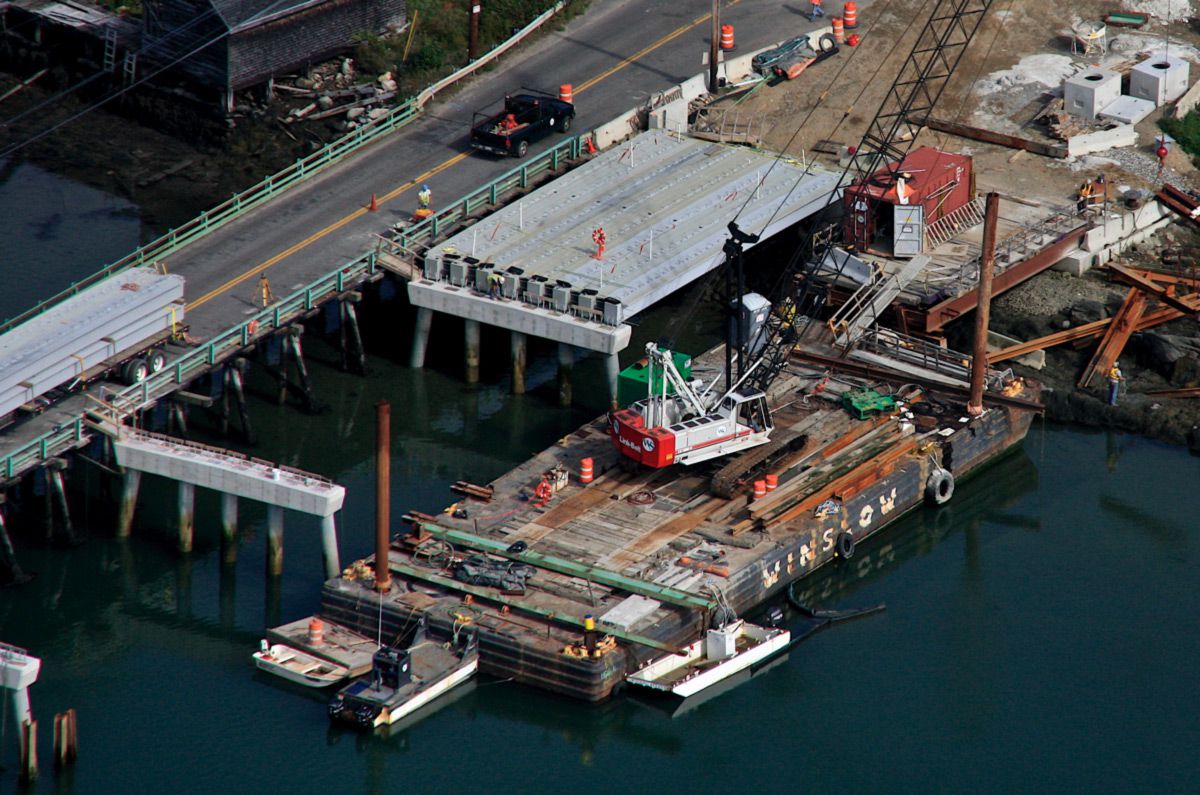

Built in 1930, with major superstructure rehabilitation in 1983, the existing Knickerbocker Bridge is in a harsh marine environment that called for a replacement bridge to better withstand the elements. The solution was the Hillman Composite Beam (HCB®s). Upon seeing the initial deployments of this revolutionary technology, Maine Department of Transportation (Maine-DOT) decided to move forward with the use of HCBs for the bridge. Whereas most agencies might choose to experiment with a small single-span bridge, Maine-DOT boldly started with an eight-span crossing resulting in the longest composite bridge constructed in the world.
The two 60-foot end spans and six 70-foot interior spans result in an eight-span bridge with a total length of 540 feet. This was the first project where HCBs were made continuous for live loads with continuity diaphragms at the piers and negative moment reinforcing steel cast in the concrete deck. As a result, the only expansion joints are located at the abutments.
To comply with the hydraulic criteria for the new bridge, the HCBs were designed to match the recommended 33-inch-deep box beams such that the required vertical under clearance was satisfied. With a span/depth ration of L/25 on the HCB units, this makes Knickerbocker Bridge one of the most slender composite bridges constructed. Additionally, it is the first HCB bridge with flanges to eliminate the need for deck forming.
The contractor took advantage of the lightweight HCBs. Since each of the 70-foot-long beams for the Knickerbocker Bridge weighed only 5,250 pounds, four HCBs were shipped on a single truck instead of one precast concrete beam per truck as would have been required. The beams were brought onto the existing adjacent bridge and erected with the same small crane used for servicing the project. This eliminated the need for an adjacent trestle and the large cranes required to set precast box beams.
Maine-DOT not only achieved a record-setting bridge, it also had one of the longest composite bridges in the world that was cost-competitive with conventional precast concrete on a first-cost basis.
Project Specs:
HCB Piece Weight
Owner: Maine Department of Transportation (Maine-DOT)
Contractor: Wyman and Simpson Inc.
Completion date: June 2011
Project Sheet: Click here for downloadable PDF version
“The technical expertise that HCB Inc. provided was fantastic. They answered any questions we had and worked with us to develop some techniques for erecting them. Using HCBs reduced trucking substantially. We were able to move four beams per truckload. If we had used conventional beams, we would have had to use significantly more trucks. Located in a marine environment, Knickerbocker Bridge was a great application for HCBs because it will withstand corrosion better than steel or concrete.”